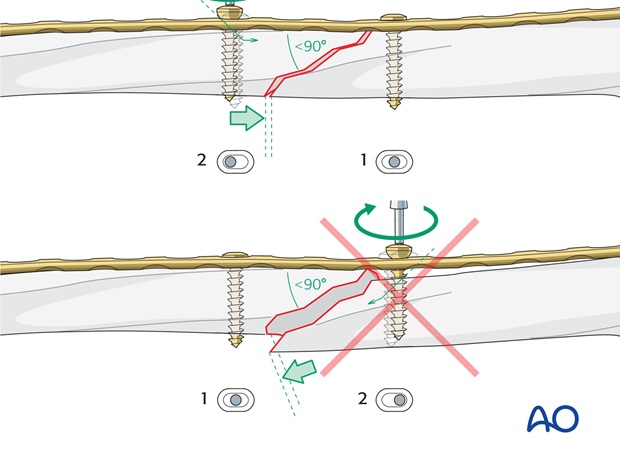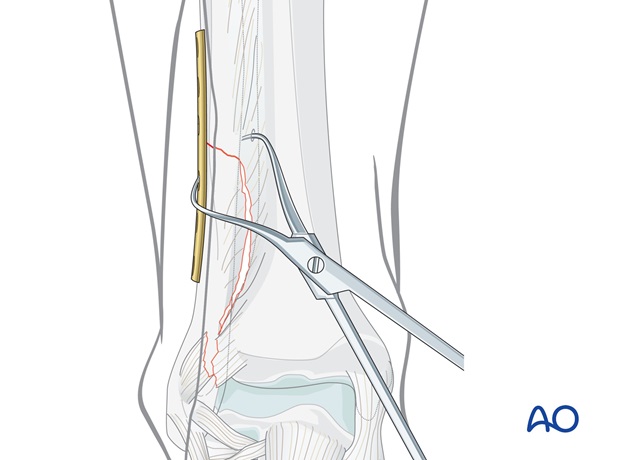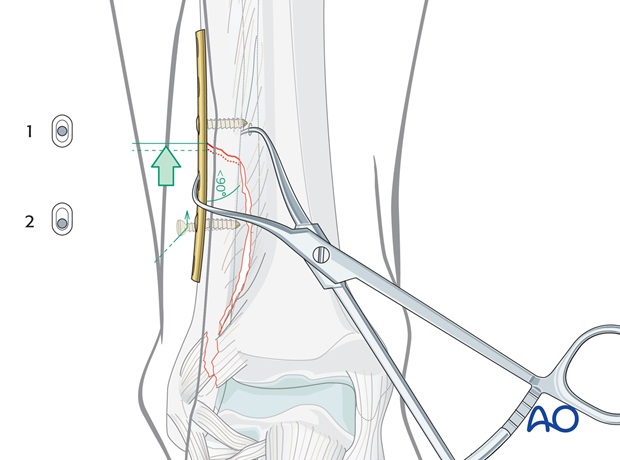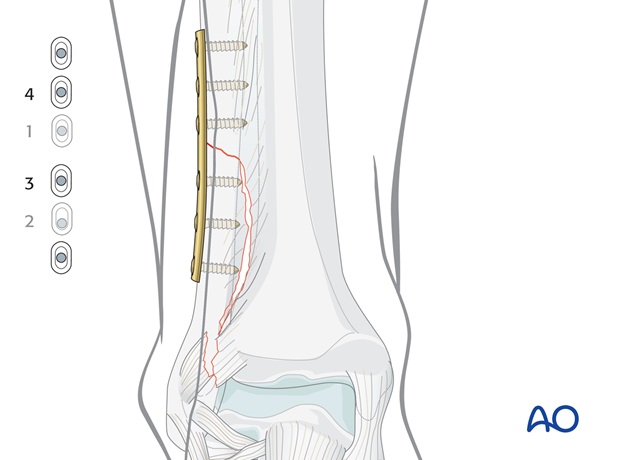Fibula, transverse or oblique fracture: compression plate
1. Principles
Compression with a plate
In transverse and short oblique fractures, placement of a lag screw is not possible. In these cases, compression can be achieved using a plate.

Sequence of screw insertion
In oblique fractures, there is a risk of shortening if the screws are not inserted in the correct sequence.
The first screw should be inserted into the fragment with a fracture angle >90 degrees beneath the plate. This creates an "axilla" into which the other fibular fragment will be compressed. A second, eccentric screw is inserted into the fragment with an angle <90 degrees.

2. Plate preparation
Depending on the required stability, use a one-third tubular plate, a 3.5 mm locking compression plate (LCP) or limited contact dynamic compression plate (LC-DCP), or a 3.5 mm reconstruction plate.
Use a six or seven-hole plate, depending on the fracture configuration. Usually, three screws in each fragment provide sufficient stability.
Contouring of the plate is necessary, depending on the anatomical situation and plate characteristics. Make sure the plate fits the surface of the fibula in order not to disturb the soft tissues.

3. Reduction
Reduce the fracture with small reduction forceps applied through a hole in the plate.
Reduce the fracture by gently rotating the reduction forceps. When reduction is achieved, lock the forceps.

4. Fixation
Apply compression
Insert the first screw into the fragment which forms a blunt angle with the plate. The screw is inserted into the hole closest to the fracture site.
Insert the second screw eccentrically near the fracture in the fragment forming an acute angle with the plate.
Tightening the screws will compress the fracture.

Insert remaining screws
Remove the reduction forceps and insert the remaining screws in neutral position perpendicularly to the plate.
Note
If the plate is conveniently placed laterally, leave one hole empty for a syndesmosis positioning screw.

Pearl
If the fracture configuration permits, ie, if the fracture is oblique enough, a lag screw can be inserted through the plate after removing the forceps.
Insert the lag screw as perpendicularly as possible to the fracture plane.














